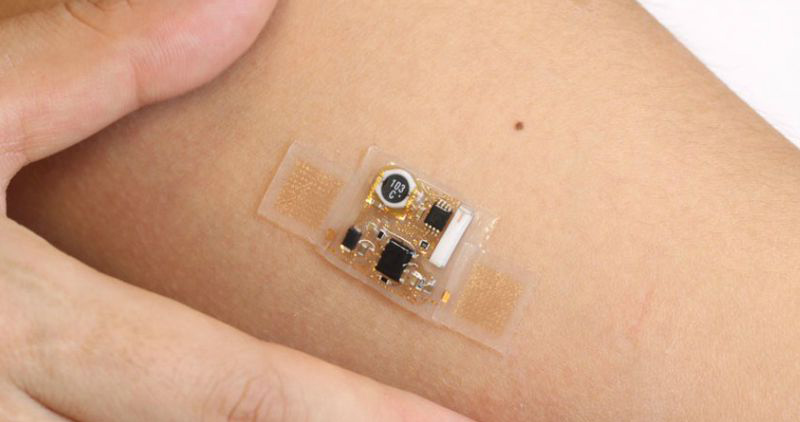
Wearable patches are useful for the diagnosis and monitoring of chronic diseases. The growing prevalence of diseases like atrial fibrillation has resulted in rising demand for wearable patches for timely diagnosis. These patches can be easily enclosed under the cloth and don’t confine the movement of the person.
The wearable patch not only retains track of their regular physical activities and also proposes recommendations. So nowadays, it is mostly recommended by doctors for patients suffering from chronic disease.
Wearable patches are also called electronic skin. Wearable or smart patches are discovered from wearable technology. This technology is helpful in monitoring the health of the user. It can be worn on the skin and they remain in close contact with the individual’s skin. So data can be easily connected. They are small and flexible in nature. These wearable patches are beneficial in maintaining the health and wellbeing of the patients.
The wearable patch is widely used in the diagnosis and monitoring of disease. It is helpful in maintaining and regulating the health status of patients suffering from chronic disease. As a wearable patch can be easily attached to the skin, it is not painful at all.
These smart patches can be worn for hours to a week. Those patients who are suffering from any chronic disease, are recommended to use wearable patches. These help in checking the health of an individual and delivering drugs accordingly.
This wearable patch is not equipped with sensors. It is used usually in cosmetic and anti-smoking wearable devices. Regular wearable patches are used both for clinical and non-clinical purposes.
Connected wearable are portable in nature. They are mostly used to monitor heart rate via Bluetooth. It also uses a microprocessor controller and myoelectric technology. Additionally, these patches are well-suited with most of the mobile OS and can be connected easily through Bluetooth
Wearable Patch is widely used in clinical and non-clinical. It is for both doctors as well as patients. These smart patches are witnessing intensive patenting activity and in drug delivery. So in hospitals and clinics, disease management and patient management can be done with the help of wearable and smart patches. Wearable technology in turn improves the patient care facility. It also reduces the cost of patient care.
Epidermal electronics is not very different from wearable technology. Although it is emerging in the field of wearable technology. It is called so because it possesses properties similar to the epidermis that is the outer part of the skin. It regulates metabolic as well as physiological functions of the body. Continuous research is being done to advance epidermal devices to be used in fitness and medicines.
It has conformal contact which is why it is able to bend and stretch easily. Therefore it eliminates the challenges that are accompanied by bulkier wearable devices. It is more accurate in the collection of data. Nowadays elastomer substances are used in making these types of wearable patches that are expected to provide more effective adhesion.
With the increasing penetration of technology, there is increasing use of wearable and smart devices in the healthcare industry. The connectivity technologies including Bluetooth, microprocessor controller, and myoelectric technology, wearable devices are becoming more advance. So the technologically advanced devices are in high demand, especially in the developed countries.
The increasing incidences of chronic disease including atrial fibrillation and diabetes has resulted in a higher number of stroke among old age people. According to a report by the American Heart Association, stroke was a leading cause of death in the U.S. in 2019. These data indicate how important it is to monitor the heart condition of such patients. And for them, wearable patches act as a blessing of technology.
There is an increasing number of diagnostic tests due to the outbreak of COVID-19 has led to the necessity for the incorporation of these data into health information systems (HIS). Sensor patches are nowadays being acknowledged in the healthcare sector for diagnostics applications.
As the current and historical data that is collected by sensor patches support clinicians with exact diagnostics. There is a rapid surge in the development of wearable devices in order to meet the increasing demand for effective healthcare.
The Wearable Patch Market has been witnessing rapid growth due to the growing prevalence of chronic diseases. Also, there is increasing penetration of advanced technology in designing these smart wearable patches. Since they are small, portable, and can be comfortably worn on the skin.
They are used in the diagnosis and monitor the health status of the patients. Even rising adoption of telehealth as well as advancements in digital technologies and wearable solutions are also offering opportunities for the market growth of the sensor patch.
The Global Wearable Patch Market has been anticipated to rise at a growth rate of 10.6% CAGR over the forecast period.